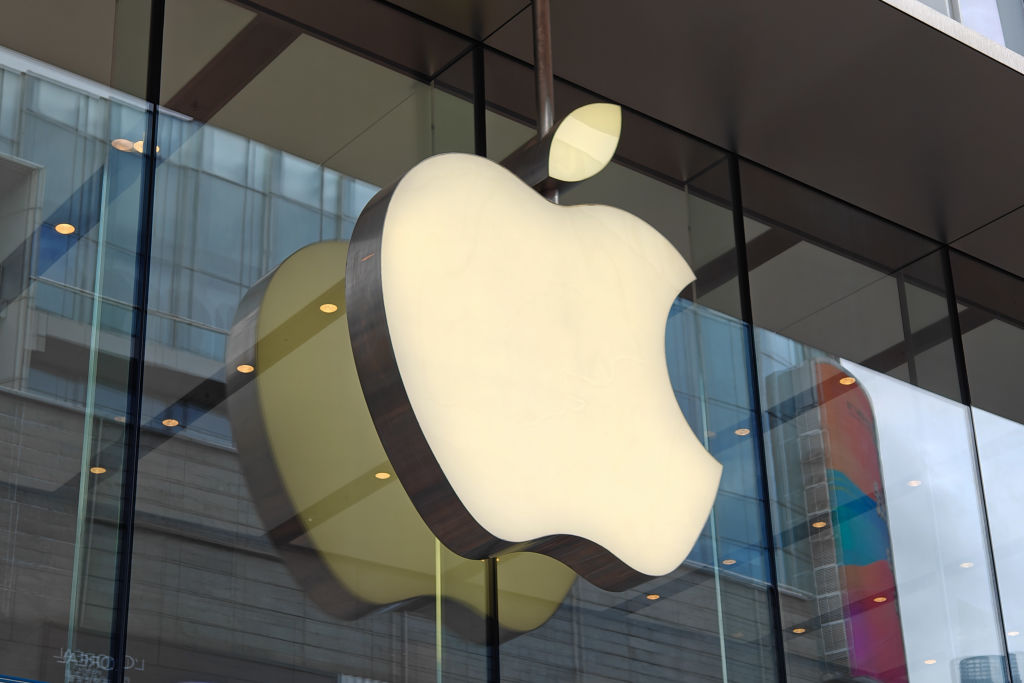3 Great Growth Stocks that Aren't FAANGs
Talk of a tech bubble has some investors worried about the outsized gains in FAANG stocks, that quintuplet of fast-growing tech firms — namely Facebook (symbol FB), Amazon.com (AMZN), Apple (AAPL), Netflix (NFLX) and Google’s parent, Alphabet (GOOGL).


Talk of a tech bubble has some investors worried about the outsized gains in FAANG stocks, that quintuplet of fast-growing tech firms — namely Facebook (symbol FB), Amazon.com (AMZN), Apple (AAPL), Netflix (NFLX) and Google’s parent, Alphabet (GOOGL). Bubble or not, we set out to find some FAANG-less growth stocks. In fact, we set our sights beyond the tech sector altogether, in search of businesses in other corners of the market with strong growth prospects.
Although the three selections below aren’t, strictly speaking, tech companies, that doesn’t mean they don’t use technology to drive growth. These days, finding a business that doesn’t “is like finding a company that runs without electricity,” says Dan Davidowitz, a comanager of Polen Growth.
Our picks hail from the medical and retail fields. Analysts, on average, expect earnings to grow at a rate that’s faster than the 11% earnings growth rate of Standard & Poor’s 500-stock index over the next year.
Prices and data are from August 18, 2017. Click on ticker-symbol links in each slide for current prices and more.
TAKE THE QUIZ: Test Your Bull Market IQ

Align Technology
- Symbol: ALGN
- Industry: Medical devices
- Market value: $13.5 billion
- Price: $168.61
- P/E: 47
- Estimated earnings growth rate over the next three years: 23%
This company has “technology” in its name, but it’s not a tech firm. It makes those invisible orthodontic braces, under the brand name Invisalign, that are gaining in popularity among adults and teens. “Vanity sells,” says Damon Ficklin, comanager with Davidowitz of Polen Growth fund.
Why bother with ugly wire braces when you can wear invisible ones? Invisalign braces — clear, plastic trays that are custom fitted and switched out periodically to gradually move your teeth into alignment — are more attractive in today’s selfie-obsessed world, says Ficklin. Also, you can’t floss with metal braces, but you can with Invisalign (by removing the trays). Invisalign can treat 50% of all orthodontic cases.
The firm’s clear braces aren’t new — they have been around for 20 years. And there are other players in this market. But customers are starting to ask for Invisalign by name, says Ficklin, a rare occurrence in the world of medical devices. “That takes the product into a whole new realm,” he says. More than 1 million patients worldwide have been treated since 2015.
Technological advances, including 3-D printing, have made treatment with Invisalign easier and more cost-effective. Typical metal braces cost $5,000; Invisalign costs $3,000 to $8,000 in the U.S. The adolescent market, which represents 70% of the entire orthodontic market, is a big growth driver for Align. The company said treatment cases for teens rose 38% in the second quarter compared with the same quarter last year; adult cases rose 29.2% over the same period.
At $169 per share, Align Tech stock trades at a multiple of 47 times expected earnings over the next 12 months. That may look rich, compared with an average price-earnings multiple of 18 for other medical device companies. But Align’s earnings are growing twice as fast. Analysts expect 27% growth in earnings over the next three years, annualized, compared with 10% for medical device firms on average.

Teladoc
- Symbol: TDOC
- Industry: Medical services
- Market value: $1.7 billion
- Price: $29.50
- P/E: not meaningful
- Estimated revenue growth rate over the next two years: 43%
Teladoc may change the way we deal with routine illnesses. The company is a top provider of anytime, anywhere medical care delivered through mobile devices, the internet, video and phone.
The Purchase, N.Y.-based firm contracts with doctors nationwide, who provide on-call treatment for a wide variety of cases, ranging from the common cold and the flu to a urinary tract infection. Teladoc then sells the service to employers, health plans and health systems, to offer as a benefit to their employees. The number of enrolled employees climbed 43% in 2016. Over time, as remote medical care becomes more mainstream, Teladoc, which commands 75% of the telemedical market today, will benefit. Analysts, on average, expect double-digit revenue growth over the next two years, according to Zacks.
The catch: Teladoc isn’t profitable yet. But Randy Gwirtzman, manager of Baron Discovery, expects the company to break even in the October-December quarter this year. More importantly, in his view, Teladoc has all the right characteristics of a good health care growth stock. “We look for a company that saves money for the government or the consumer, that delivers better outcomes for patients, is run by a good management team and has a high barrier to entry,” says Gwirtzman. “Teladoc satisfies all those things.”

Ulta Beauty
- Symbol: ULTA
- Industry: Retail
- Market value: $15.2 billion
- Price: $244.20
- P/E: 28
- Estimated earnings growth rate over the next three years: 20%
Retailers are struggling these days, but not Ulta Beauty. The Bolingbrook, Ill.-based firm operates more than 1,000 stores in 48 states and the District of Columbia, offering a wide range of skincare and haircare products, makeup, cosmetics and salon services. Ulta is getting some lift from technology — the firm’s e-commerce sales increased 56% in the past fiscal year. But its brick-and-mortar sales are its core business. And wares don’t stay on the shelves for long. The firm’s quarterly same-store sales (sales at stores open more than one year) log consistent growth in the range of 9% to 14% compared with comparable prior-year quarters, at a time when other retailers are experiencing declining sales.
The stock, once a favorite of growth-oriented investors, has dropped nearly 22% since early June, in part because of news that Amazon.com may move into the beauty-products business.
But the company is rock-solid, and we would be ready to buy even if prices fall further. Ulta holds zero debt and produces plenty of cash. And over the past 12 months, it boasts a 22% return on invested capital, a measure of profitability. By contrast, the typical retail company, according to Zacks, reported a 11% return on invested capital over the past 12 months.
At $244 a share, the stock trades at a lofty 29 times expected earnings for the current fiscal year, ending in January 2018. But Ulta’s earnings are growing at a brisk pace compared with other specialty retailers. William Blair analysts Daniel Hofkin and Jordan Voss, who rate the stock “outperform,” expect Ulta to post earnings of $8.30 a share in the current fiscal year and $9.80 in the year ending in January 2019. That’s an increase, year-over-year, of 27% and 18%, respectively.
Get Kiplinger Today newsletter — free
Profit and prosper with the best of Kiplinger's advice on investing, taxes, retirement, personal finance and much more. Delivered daily. Enter your email in the box and click Sign Me Up.

Nellie joined Kiplinger in August 2011 after a seven-year stint in Hong Kong. There, she worked for the Wall Street Journal Asia, where as lifestyle editor, she launched and edited Scene Asia, an online guide to food, wine, entertainment and the arts in Asia. Prior to that, she was an editor at Weekend Journal, the Friday lifestyle section of the Wall Street Journal Asia. Kiplinger isn't Nellie's first foray into personal finance: She has also worked at SmartMoney (rising from fact-checker to senior writer), and she was a senior editor at Money.
-
 2026 Disney Dining Plan Returns: Free Dining for Kids & Resort Benefits
2026 Disney Dining Plan Returns: Free Dining for Kids & Resort BenefitsPlan your 2026 Walt Disney World vacation now. Learn about the returning Disney Dining Plan, how kids aged three to nine eat free, and the exclusive benefits of staying at a Disney Resort hotel.
By Carla Ayers
-
 How Can Investors Profit From AI's Energy Use?
How Can Investors Profit From AI's Energy Use?Global energy demand is expected to grow by leaps and bounds over the next several years as AI usage accelerates. Here's how to get a piece of the pie.
By Jacob Schroeder
-
 Is Netflix Stock Still a Buy After Earnings, Price Hikes?
Is Netflix Stock Still a Buy After Earnings, Price Hikes?Analysts were bullish on Netflix stock ahead of its earnings beat, but what is Wall Street saying now? We take a closer look.
By Joey Solitro
-
 The Cheapest Places To Retire in the US
The Cheapest Places To Retire in the USWhen you're trying to balance a fixed income with an enjoyable retirement, cost of living is a crucial factor to consider.
By Stacy Rapacon
-
 Stock Market Today: Stocks Rally on Strong Netflix Earnings
Stock Market Today: Stocks Rally on Strong Netflix EarningsMega-cap tech leads the charge as markets rise for a sixth straight week.
By Dan Burrows
-
 Netflix Stock Jumps to the Top of the S&P 500 After Earnings. Here's Why
Netflix Stock Jumps to the Top of the S&P 500 After Earnings. Here's WhyNetflix stock is spiking Friday after the streaming giant beat third-quarter expectations and gave an upbeat fourth-quarter outlook.
By Joey Solitro
-
 Apple Stock's a Buy Ahead of Apple Event 2024
Apple Stock's a Buy Ahead of Apple Event 2024Apple stock is on Wall Street's radar ahead of the tech giant's annual September product event, which begins on Monday. Here's what analysts are saying and what you can expect to see.
By Joey Solitro
-
 Warren Buffett Adores Apple as Much as Ever
Warren Buffett Adores Apple as Much as EverBerkshire Hathaway trimmed its Apple stake because taxes are "likely" to go up "later."
By Dan Burrows
-
 Stock Market Today: Nasdaq Spirals as Netflix Nosedives
Stock Market Today: Nasdaq Spirals as Netflix NosedivesA big earnings boom for credit card giant American Express helped the Dow notch another win.
By Karee Venema
-
 Where Can the Magnificent Seven Stocks Go in 2024?
Where Can the Magnificent Seven Stocks Go in 2024?The Magnificent Seven have been driving stock returns. Here, we take a close look at the mega-cap hotshots to see what's next.
By Nellie S. Huang
